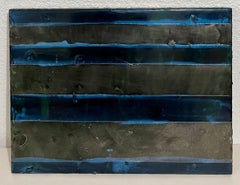Tom Parish
Early 2000s Abstract Expressionist Abstract Paintings
Resin, Oil, Panel
People Also Browsed
21st Century and Contemporary Contemporary Abstract Sculptures
Wood, Lights, LED Light, Mixed Media, Acrylic, Neon Light
Early 2000s Italian Mid-Century Modern Sectional Sofas
Fabric
1990s Abstract Expressionist Abstract Prints
Etching, Aquatint, Intaglio, Handmade Paper
Vintage 1970s Italian Space Age Architectural Elements
Fiberglass
2010s Contemporary Landscape Paintings
Canvas, Oil
Late 20th Century American Modern Games
Resin, Wood
20th Century American Modern Wall Mirrors
Mirror, Wood
1970s Pop Art Animal Prints
Lithograph, Screen
1960s Abstract Abstract Prints
Pencil, Lithograph
1980s Abstract Mixed Media
Fabric, Paper, Mixed Media, Laid Paper
2010s Contemporary Landscape Photography
Archival Ink
1980s Abstract Expressionist Abstract Paintings
Paper, Acrylic
21st Century and Contemporary Contemporary Abstract Paintings
Resin, Epoxy Resin, Mixed Media, Oil
Mid-20th Century Expressionist Abstract Drawings and Watercolors
Ink, Watercolor
21st Century and Contemporary Contemporary Abstract Paintings
Resin, Epoxy Resin, Mixed Media, Oil
Erin Parish for sale on 1stDibs
Erin Parish is an American painter born in 1966. His trademark paintings are marked by the repetition of circular forms and the influence of a diverse set of interests, the tranquility of the ocean; the meditative tenets of Buddhism and aesthetics of Wabi-Sabi, along with the utopian quality of German Expressionism. Parish draws on the patterns found in nature for her subject matter, exploring the ways they mirror each other at both microscopic and macroscopic levels.
Finding the Right Abstract-paintings for You
Bring audacious experiments with color and textures to your living room, dining room or home office. Abstract paintings, large or small, will stand out in your space, encouraging conversation and introducing a museum-like atmosphere that’s welcoming and conducive to creating memorable gatherings.
Abstract art has origins in 19th-century Europe, but it came into its own as a significant movement during the 20th century. Early practitioners of abstraction included Wassily Kandinsky, although painters were exploring nonfigurative art prior to the influential Russian artist’s efforts, which were inspired by music and religion. Abstract painters endeavored to create works that didn’t focus on the outside world’s conventional subjects, and even when artists depicted realistic subjects, they worked in an abstract mode to do so.
In 1940s-era New York City, a group of painters working in the abstract mode created radical work that looked to European avant-garde artists as well as to the art of ancient cultures, prioritizing improvisation, immediacy and direct personal expression. While they were never formally affiliated with one another, we know them today as Abstract Expressionists.
The male contingent of the Abstract Expressionists, which includes Jackson Pollock, Willem de Kooning and Robert Motherwell, is frequently cited in discussing leading figures of this internationally influential postwar art movement. However, the women of Abstract Expressionism, such as Helen Frankenthaler, Lee Krasner, Joan Mitchell and others, were equally involved in the art world of the time. Sexism, family obligations and societal pressures contributed to a long history of their being overlooked, but the female Abstract Expressionists experimented vigorously, developed their own style and produced significant bodies of work.
Draw your guests into abstract oil paintings across different eras and countries of origin. On 1stDibs, you’ll find an expansive range of abstract paintings along with a guide on how to arrange your wonderful new wall art.
If you’re working with a small living space, a colorful, oversize work can create depth in a given room, but there isn’t any need to overwhelm your interior with a sprawling pièce de résistance. Colorful abstractions of any size can pop against a white wall in your living room, but if you’re working with a colored backdrop, you may wish to stick to colors that complement the decor that is already in the space. Alternatively, let your painting make a statement on its own, regardless of its surroundings, or group it, gallery-style, with other works.
